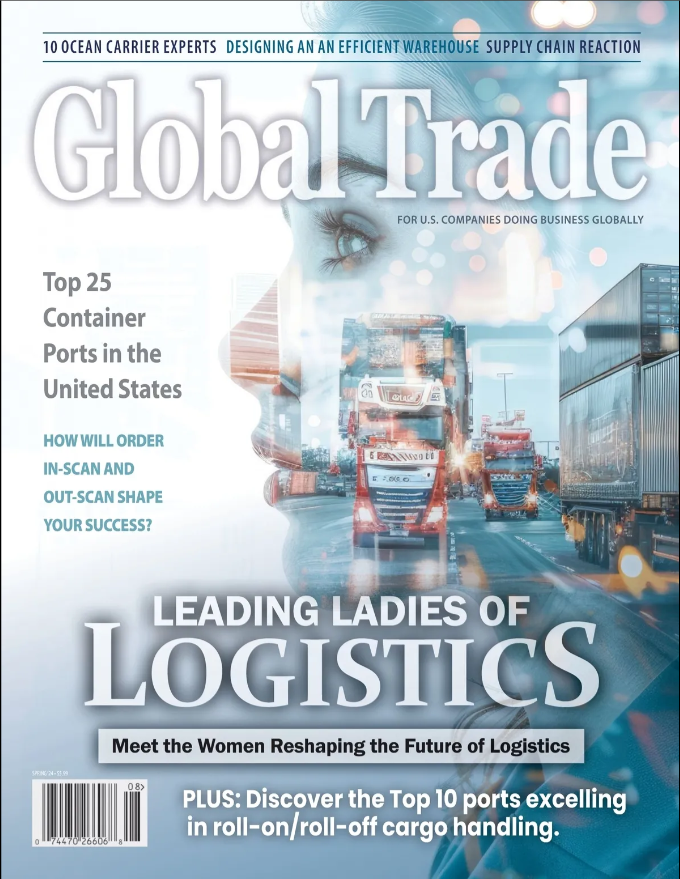Louis-Based Tech Start-Up Aims To Help Make Railroads Competitive For The Next 200 Years Through Autonomous Railcars
FreightWeekSTL 2022 kicks-off with session highlighting Intramotev’s self-propelled railcar
FreightWeekSTL 2022 kicked off May 23 with Innovation Day, featuring emerging technologies that have the potential to dramatically change the future movement of freight. The opening session highlighted the advancements being made by St. Louis start-up Intramotev Autonomous Rail.
Those in attendance learned about an autonomous, zero-emissions railcar that would be able to operate without the use of a locomotive. That new technology could enable better use of the U.S. freight rail network and help mitigate the type of supply chain challenges occurring around the globe, while reducing pollution in the rail industry.
Timothy Luchini, Ph.D., CEO and co-founder of Intramotev, commented on the trends related to the movement of freight by rail and truck, with year-over-year increases in trucking volumes and flat or slightly decreasing volumes in rail. He said these are trends his company hopes to reverse with its new autonomous vehicles as they build the technology they believe will help make railroads competitive for the next 200 years.
Intramotev is building that “something” that could be a game changer for the rail industry – the TugVolt. This is a battery-electric, self-propelled railcar that enables freight to move with the flexibility of a truck, without breaking the existing model of rail operations.
The concept allows for the vehicle to be in first and last-mile service and create a form factor that can be as fast and flexible as a truck. In the middle-mile operations – where Class I railroads are efficient today with very long trains – it still has all the required safety systems to serve as a railcar during those legs of the journey. In short, it provides a solution that complements the current model of rail transportation by allowing for the packetization of freight and vehicles, yet offers speed and reliability.
Luchini said a vehicle like this can also help solve dwell issues — the time that is required for vehicle delays, when they are waiting to get moved. Congestion at major ports in the United States is another challenge TugVolt is working to address. This type of railcar solution allows for better utilization of existing vehicles by shortening the size of the train, the number of cars in the consist – reducing congestion in a way that allows materials to get moving again.
From a technology perspective, Luchini said the TugVolt contains three containerized modules, including a sensory and location stack that identifies a vehicle’s location, how fast it is going and what is going on around it; an energy storage module, and a propulsion drivetrain with regenerative breaking.
The TugVolt has battery packs that are smaller and more in order and magnitude of an electric car because of rail rolling resistances and aerodynamic drag benefits. There is the ability to shrink those pack sizes down and stack efficiencies on top of each other to provide vehicles with 100 to 600 miles of range with 100-ton types of payloads without sacrificing burden payloads because the rail capacity can handle so much more load.
It affords the opportunity to right-size the energy storage to the mission and use energy storage and battery technologies that are available off the shelf today, whereas certain other solutions and mobility sectors still need two-times or four-times improvements in energy storage to close business cases.
Rail also allows for vehicle platooning, inherently enabling vehicles to be built to handle and share loads between the vehicles in the consist, giving opportunity for energy sharing and a more efficient utilization of those battery packs distributed along multiple vehicles and multiple systems along the length of the train.
In terms of how soon and where the TugVolt will be making its official debut, Luchini said Intramotev has early pilots in private and captive-use cases scheduled for the end of 2022. Examples of such private captive use cases could be a river port or transload facility connected to a processing facility that might be a few miles inland, and the TugVolt would be tested during a variety of operations.
He also cited interplant railroads at operations such as steel mills where rail moves around facilities, and even connecting point to point inside the same factory, as scenarios where this could be a really useful, viable technology.
Deployment like this will provide an opportunity to collect all the data that shows it is operating safely and reliably, and that will enable Intramotev to then test in the larger rail networks. Getting to that stage will also require working through the regulatory environment and that process will take time.
FreightWeekSTL 2022 continues online through May 27 and will feature panel sessions with industry experts and leaders in freight, logistics and transportation. The week-long event is being delivered by the St. Louis Regional Freightway and Bi-State Development in conjunction with The Waterways Journal. To learn more and register for the remaining sessions or view past sessions for FreightWeekSTL 2022, visit www.freightweekstl.com.
About St. Louis Regional Freightway
The St. Louis Regional Freightway is a Bi-State Development enterprise formed to create a regional freight district and comprehensive authority for freight operations and opportunities within eight counties in Illinois and Missouri, which comprise the St. Louis metropolitan area. Public sector and private industry businesses are collaborating with the St. Louis Regional Freightway to establish the bi-state region as one of the premier multimodal freight hubs and distribution centers in the United States through marketing, public advocacy, and freight and infrastructure development. To learn more, visit thefreightway.com.





Leave a Reply